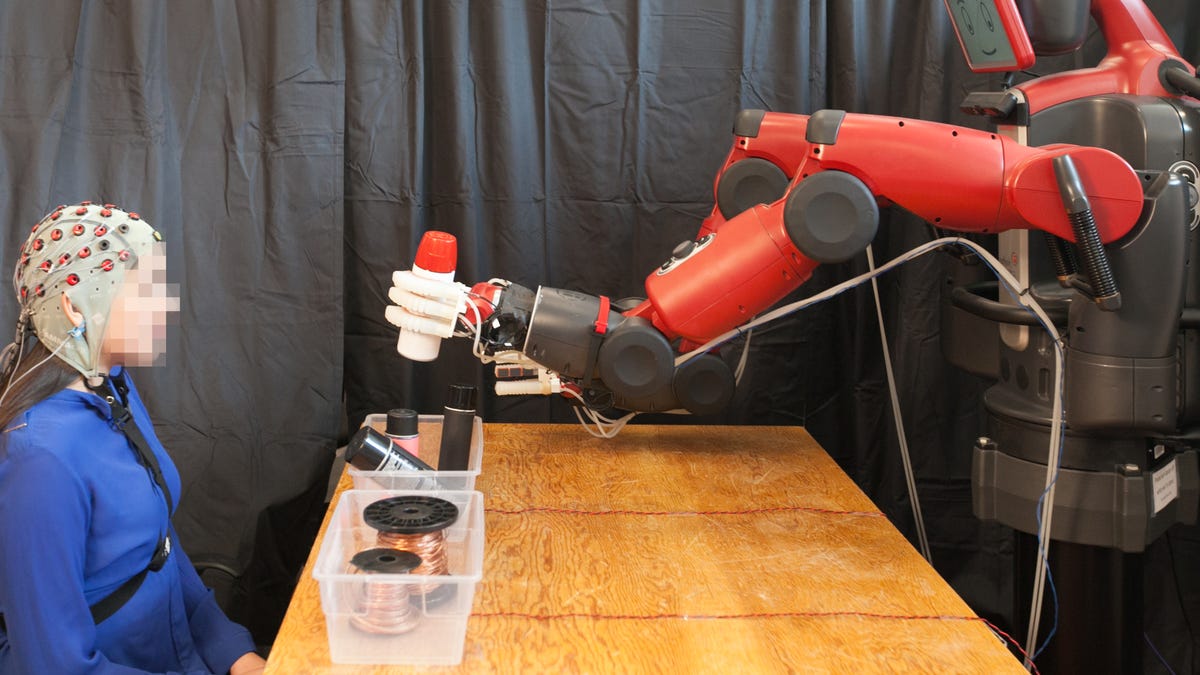This MIT robot reads your mind to know when it screws up
Baxter can read your mind to learn if it's getting a simple task right or wrong, possibly setting up a foundation for thought-controlled machines.
Meet Baxter, a humanoid robot that can recognize and respond to a thought we probably all have about others all the time: "You're doing that wrong."
That's right, know-it-alls, a robot that you can correct and shame without even opening your mouth.
The system out of MIT requires a human participant to wear an electroencephalography (EEG) monitor that records brain activity and can tell when that person thinks Baxter is screwing up as it sorts objects.
You can watch one such experiment below involving Baxter separating spools of wire from cans of paint.
This isn't the first time we've seen this sort of mind-controlled technology. Locked-in test subjects have donned EEG caps to communicate, while others have have worn them to control a weird flying shark balloon through thought alone. But most such systems require that users be trained to essentially think in a way the robot or algorithms connected to it will be able to recognize. MIT set out to design a system that could actually respond to a person's more natural, automatic responses to a robot's actions.
Specifically, Baxter focuses on brain signals called "error-related potentials" (ErrPs) that our minds generate whenever we notice a goof.
"As you watch the robot, all you have to do is mentally agree or disagree with what it is doing," Daniela Rus, director of MIT's Computer Science and Artificial Intelligence Laboratory (CSAIL), said in a release. "You don't have to train yourself to think in a certain way -- the machine adapts to you, and not the other way around."
Baxter is actually a multi-purpose robot from Rethink Robotics designed for industrial automation that MIT researchers hooked up to their mind-reading algorithm.
Right now Baxter can only handle binary "right or wrong" activities, but the research team thinks it could also be possible to control multiple-choice tasks via thought. Eventually, the system could be a foundation for fully controlling robots in more intuitive ways.
"Imagine being able to instantaneously tell a robot to do a certain action, without needing to type a command, push a button or even say a word," Rus said. "A streamlined approach like that would improve our abilities to supervise factory robots, driverless cars and other technologies we haven't even invented yet."
Yep, human mind control of machines sounds great, let's just hope it never works the other way around.
Solving for XX: The industry seeks to overcome outdated ideas about "women in tech."
Crowd Control: A crowdsourced science fiction novel written by CNET readers.


